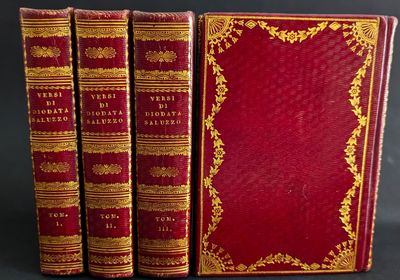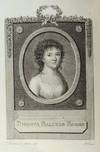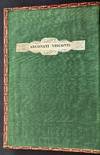1817 · Torino
by Saluzzo Roero, Diodata
Torino: Vedova Pomba e Figli, 1817. 4 volumes. 12mo., 150 x 110 mm., [6 x 4 inches]. 240 pp.; 256 pp.; 278 [1] pp. xvi, 255 [1] pp. Illustrated with an engraved portrait by P. F after a drawing by Dedemonici in volume 4. Printed on thick paper and bound in late 19th century full red straight grain morocco, gilt decorative floral boarder on both boards, spine decorated in gilt, all edges gilt. Some minor foxing to a few pages of text. Book label of Marchesa Maria Louise Arconati Visconti in all four volumes.
Collector’s copy of the poems, prose, and theater productions written by one of the first (truncated)
Collector’s copy of the poems, prose, and theater productions written by one of the first (truncated)





